Perennial phlox: an overview of varieties and recommendations for growing

Phlox has been familiar to gardeners for a long time. But you can count on success in the cultivation of phlox only after a thorough study of this culture. It is also useful to know those problems, difficulties that may await flower growers.

General characteristics
It is appropriate to start a conversation about perennial phlox by mentioning their appearance. The description of this plant is already hidden in its name, which goes back to the word "flame". These perennials originate from North America. Only one type of phlox is found in Siberia. All these species are simple and undemanding to care for, which is why gardeners appreciate them. Forms lush flowers phlox only on condition that it will not be transplanted frequently. It is advisable to transplant the plant at most once every 5 years. The modern name of the flower was given by the famous Karl Linnaeus. Phloxes are perfectly adapted to the Russian climate. In total, up to 65 species of phlox delight people with their flowering with:
- lying;
- upright;
- the ascending structure of the stems.




The foliage is characterized by an opposite or regular arrangement, an integral structure. The buds are tubular-funnel-shaped, they have 5 petals. The diameter of the flower is 0.02-0.05 m. The color of the flowers can vary greatly. There is a difference in the geometry of the inflorescences. The root system of any phlox is formed by multiple adventitious roots. Phlox roots are strongly branched. They can penetrate into the ground up to 0.3 m, and the diameter is 0.4-0.6 m. The ground parts of the crop can overwinter without the help of people. Every autumn, 4-5 buds appear at the base of the shoots, which ensure the resumption of growth in the next season.

Overview of species and best varieties
Speaking of the names of perennial phlox, it is necessary first of all to mention such varieties as:
- subulate;

- spread out;

- paniculate phlox.

The subulate group is relatively small, even more so - it is these phloxes that are better suited for alpine slides, rockeries and other landscape compositions. The height of the shoots does not exceed 0.2 m. The leaves are relatively narrow and resemble needles in shape. It is characteristic to preserve the green color until the onset of cold weather. The subulate phlox will bloom twice during the season. These plants are great for:
- alpine slide;
- rockery;
- other types of landscape compositions.


Terry phlox are popular. They are, however, not very common. The aroma of terry phlox is excellent. The stem height can be up to 0.6 m. The overwhelming majority of gardeners like the appearance of such a group of varieties.
Blue phlox are in demand by flower growers, almost all of them form low stems. Flowering begins from the first days of summer. In the wild, blue phloxes form attractive carpets. Noteworthy are the following blue varieties:
- BlueParfume;


- VioletQueen;


- Montrose Tricolor;


- Chattahoochee.


Creeping ground cover phloxes give spready bushes with narrow pointed leaves. The root system develops rapidly and covers a large area. The height of the bushes varies from 0.15 to 0.2 m. The inflorescence umbrella includes 7-8 flowers, sometimes there are single flowers. The petals of the ground cover phlox have a variety of colors. The shape of the petals is like a lollipop or a heart. Flowering lasts from mid-May to early September.Repeated autumn flowering is possible. Breeders have not yet created pure yellow phloxes. Only recently have several varieties been created, the petals of which have a yellow-green border.

An example of such a plant is Sherbet cocktail... Flowers in this variety often have a pale lemon border. Stronger yellow color on the petals Babje leto... Olive yellow droplets on the edges of the petals are characteristic of the varieties Green Bead and Jade... The flowers themselves are relatively small, no more than 0.02 m in diameter.

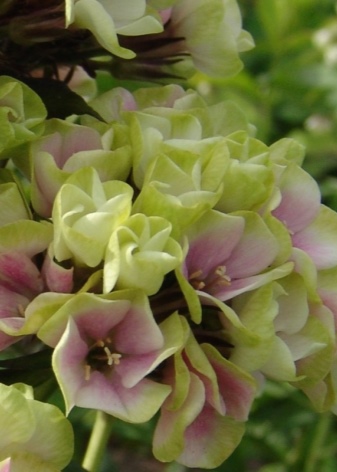
Breeders have not yet had time to breed red phlox varieties. Sometimes you can find references to such colors in trade names. The flowerbed, however, produces orange and crimson flowers. The varieties that are closest to the red color are Odile and Mary... The second option is shorter, otherwise they are quite close; you will have to choose a plant to your liking.


Most of the phlox varieties are colored blue. There are many such varieties in the paniculate group. An expressive example - grade "Fog", which is able to keep its shape well and not "fall apart". Even the splendor of the inflorescences does not interfere with this. The petals are painted in a lilac-blue tone, which only becomes more beautiful thanks to the raspberry ring.


At dusk, "Fog" is transformed, acquires a delicate blue color. This variety has slightly wavy petals. "Fog" takes root without problems and is less susceptible to fungal attack. It is worth thinking about the Blue Sea variety. Its bushes reach 0.65 m in height and can grow rapidly.
Blue "Night" is compact. Its bushes rise up to 0.7 m in height. Disease resistance is average. "Night" can fade from bright sunlight. Another blue color is typical for varieties "Bird Sirin" and "Forget-me-not".



When choosing early varieties, you should pay attention to "Margarita"... It has a crimson-red color and forms large, up to 0.04 m, buds. The center of the flower is darker than its periphery. The height of the bush can be up to 0.7 m. At the same time, the plant is relatively compact, which will delight the owners of small flower beds.
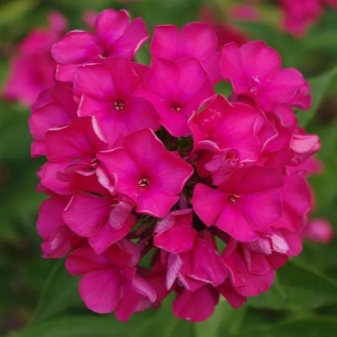

The average flower size is typical for varieties "Europe"... Their diameter reaches 0.035 m. The inflorescence is formed very dense and at the same time strikes with a picturesque look. "Europe" is growing rapidly and can withstand extreme cold. She needs wide areas for planting, as it grows quickly.
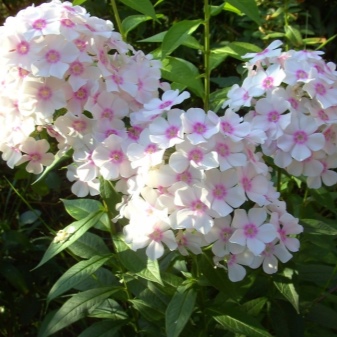

The already mentioned “Forget-me-not” will help to replace “Europe”. This plant will delight you by changing the color of the flower in accordance with the time of day. The diameter of the bud is about 0.04 m. Forget-me-not grows to 0.7 m. The flowering time can be 30-40 days.
Phlox looks nice too "Mulatto". This variety belongs to the chameleon group. As the flower grows, it gradually changes color. Initially, the petals are purple with a white center. After a while, the edge of the flower is covered with a silvery haze; at the same time, the petals become lilac, and the middle of the bud becomes purple in color.


The diameter of the buds of this variety is only 0.035 m. The top is of medium density, similar to a ball. "Mulatto" is able to grow up to 1 m, while fast enough. The variety will bloom from mid-summer. The "tropical" name is not accidental - a decrease in temperature has an extremely negative effect on the plant.
The variety also deserves attention. "Faina Ranevskaya", characterized by matte large inflorescences. The bushes of "Faina Ranevskaya" are strong and can grow up to 0.8-1 m. The stems are covered with dense foliage, the edges of the leaves are directed towards the ground. Flowering occurs in the middle of summer, while the plant also perfectly tolerates fungal infections.


For "Perun" not too large inflorescences are characteristic, developing on a strong, 0.85 m high stem. Another variety "Perun" stands out for its complex color changing over time.The lilac-pink color of the flowers is complemented by a purple core, and later the edge of the flower is covered with a whitish haze. It is advisable to plant "Perun" in a limited area, it grows poorly; phlox will bloom in July and August.


Conflicting reviews give the variety Balmoral... At first glance, it does not look gorgeous, it has large flowers. They gather in round pink inflorescences. Blooming "Balmoral" lasts all summer and even captures September. However, with the arrival of cool weather, especially if changes in air humidity begin, the flowers quickly disappear.

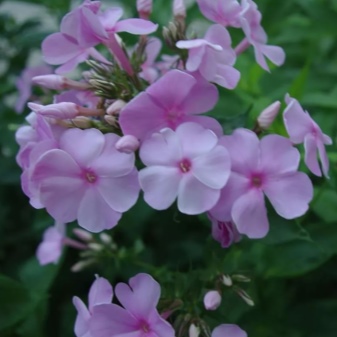
Phlox "Blue Paradise" blue leaves with bluish veins are formed. The color of the flower changes depending on the lighting. In the daytime, the Blue Paradise bush has a soft lilac color and a darker star in the middle. In the center of any petal there is a white gradient-type spot. At dusk and in bad weather, phloxes have a bright blue color; all petals have blue-violet stripes.


Planting and transplanting
It is very important that the plant is planted correctly. It is required to work as carefully as possible and take care of the planted plant. However, the best results can be obtained when phlox is planted in the fall. Spring planting is bad in that, due to the early awakening of the plant, transplanting can cause great damage to the roots. The flower will hurt for a long time and in the first season it will not bloom in a new place. The container culture can be transplanted at any convenient time - there are no such restrictions as when growing in the open field.

In summer, phlox is transplanted only when absolutely necessary. If there is one, transplantation is possible even during rapid flowering. In this case, the bush is cut off and the peduncles are removed. It is necessary to dig up the plant with a large lump of soil so that the roots remain intact in the process. You will also have to keep moisture in the ground and shelter the plant from the sun's rays.
Where winter comes early, only early varieties of phlox can be planted in autumn. No one can name the exact date when it is best to plant a flower. You will have to take into account the climate, the actual weather, the characteristics of the variety and the possibilities of caring for the plant. In any case, it is worth considering such a requirement: from disembarkation to the beginning of severe persistent cold weather, there should be at least 40-45 days. Gardeners will be greatly helped by weather diaries, which systematically record the timing of meteorological changes. Florists of the middle lane and the Moscow region can plant phloxes until the end of September. But if the weather is bad, you can't do that. For autumn planting, mulching is carried out:
- peat;
- sawdust;
- fallen leaves.

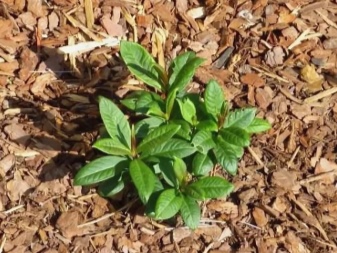
Mulch must be removed in spring and as early as possible. Otherwise, the seedlings will experience many problems and may even rot. In the Leningrad region, the planting of phlox is recommended from September 1 to 20. Since damp soil prevails there, it is necessary to ensure the most intensive drainage of the flower bed. It is better for Ural and Siberian gardeners to focus on the end of August - the first week of September, otherwise the chances of success are small.


Phlox should be planted on a cool or cloudy day. Planting with the help of cuttings, cuttings and seeds is allowed. Choose a place with constant sunlight. Shade is acceptable, but too much shading is contraindicated for the flower. Dark petals can suffer from bright light, therefore varieties with them are recommended to be planted in partial shade.
Regardless of the variety, phloxes must be protected from the wind. The best protection is the structure, slightly worse - the previously planted shrubs. The soil is prepared within 20-28 days before disembarkation; you need to dig up the earth by a maximum of 0.15-0.2 m. The ideal option for phlox is loam with the addition of sand, humus and peat. A greater amount of sand is laid in clay beds, and in sandy areas the balance is shifted towards humus.


Care rules
Growing phlox at home outdoors is easier than many other flowers. However, you will still have to follow the elementary precautionary rules. In the spring, stagnation of water in the soil must be carefully avoided. If the groundwater reaches a level of 0.15 m and higher, you will have to choose elevated areas or form a low embankment to grow phlox. The soil structure should be moderately loose.


Do not grow phlox in damp areas where ice forms in autumn or spring. Even such an unpretentious flower suffers greatly from icing. In the summer, first of all, it is required to systematically water the plants. The systematic addition of top dressing also plays a significant role. Sand is introduced into the loam to retain more water amid drought. Water the flowers with cool, but by no means cold water. Excessive cooling leads to cracks in the root and branches. The land around phlox is systematically loosened and heaped up in order to accelerate the development of roots. As soon as some kind of shoot has dried up, it is cut out, otherwise new branches will not appear on the phlox.

The first feeding with organic matter (manure diluted in water) is carried out in the last decade of May. In early June, feeding is repeated, but superphosphate and potassium salt are added. Then they pause for a month, after which they bring in already clean diluted manure. The last summer feeding of phlox is done at the end of July. This time, potash-phosphorus compositions are used. Nitrogen fertilizers should not be applied from the beginning of August. When frost approaches, you need to actively water the phlox. Then they wait a few days for dry weather to come, and they cultivate the land near the roots with fungicides. After 12-14 days, potassium and phosphate-based preparations are laid in the ground. Thanks to them, when the hibernation ends, the flower will begin to grow as quickly as possible.

You need to mulch phlox of any kind, even in the warmest regions of our country. This procedure is especially important if there is not enough snow in winter. There should be as little time as possible between laying the fertilizer and laying the mulch. The best cover against adverse factors is provided by:
- dry humus;
- horse manure;
- peat.



If these materials are not available, you can use regular dry foliage or cut branches. It is categorically unacceptable to cover phloxes with polyethylene, roofing felt or other materials impervious to air. Be sure to prune in the fall. Thanks to her, the culture survives the cold more easily and will bloom more abundantly. An additional benefit will be getting rid of most pathologies and harmful insects.

How do they reproduce?
To breed phlox, the easiest way is to use the division of the bush. The procedure is carried out both in spring and in the first third of autumn. Both options allow you to guarantee the rooting of the divisions before the onset of the cold season. Summer division of the bush is carried out only as a last resort, when there is no time to wait. In the autumn months, such a procedure is possible only after laying the buds of renewal. Delenki should be large, with a lump of earth. Root collars and roots are best separated by hand. It is necessary to plant delenki immediately, otherwise the root system will dry out. You can also use root cuttings. This technique is optimal even for inexperienced breeders.

Reproduction by cuttings is possible if the shoots are developing rapidly, but budding has not yet begun. Typically, phloxes have this period in May and June. It is best to use green, well-developed shoots that come from healthy flowers. For propagation by cuttings, both boxes for seedlings and open fertile soil are used. It takes 2-3 weeks for the planting material to take root. You can also grow phlox using leafy cuttings. Better conditions for such work are created from late June to mid-July. You need to take a leaf with a bud in the bosom and a small piece of the stem.Leafy cuttings are planted in boxes with a light nutrient medium. Then the boxes are kept in a greenhouse at 18-20 degrees; it takes about 30 days to wait for their rooting.

Reproduction of phlox from seeds is justified only for breeding purposes. In this case, the boxes are removed immediately before sowing (this way there are more chances of success). The sowing itself is carried out before winter to compensate for the rapid loss of germination. For this, the darkest and heaviest seeds are chosen. Additional stratification is not carried out - it will take place naturally in winter.
Diseases and pests
Treatment of phlox at home is quite possible. But it is important to timely detect the very fact of defeat. Competent florists inspect the beds and flower beds at least twice a month. The appearance of rust is indicated by the appearance of brown patches on the leaves. The darker the natural color of plants, the higher the likelihood of such a disease. It is worth remembering that for infection with a fungus, it is enough to get a single spore on the culture. Therefore, the disease resumes even with a successful cure. Rust prevention is carried out using vitriol and other compounds containing copper. Spraying of the drug is carried out on bushes and on the surrounding land.

A more serious danger is variegation. It is very difficult to detect it in time, because the manifestation of the mosaic virus can be masked by natural stripes. Gradually, but steadily, phlox will degrade. It is possible to confirm the fact of mosaic infection only after examining the samples in the laboratory. Phloxes often suffer from jaundice. It manifests itself as a lack of flowering, loss of normal flower color, and a decrease in the length of deciduous nodes. Sick specimens are immediately destroyed. Leaves affected by powdery mildew are also destroyed. Prevention is provided with soda solutions or diluted pesticides. Of the pests, the main risk is:
- stem nematodes;
- slugs;
- snails;
- scoops;
- slobber;
- green bugs.
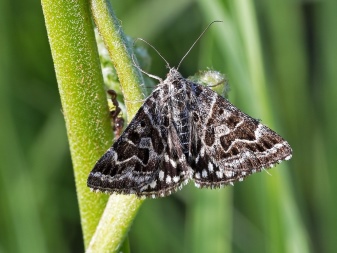



Possible problems
Difficulties arise when planting awakened rhizomes. If there are already shoots, it is impractical to purchase planting material. Delenok roots can develop at a positive temperature. Such conditions cannot be created on the windowsill in the house. In order not to face a situation where the share does not grow, you just need to purchase vegetative specimens or comply with standard terms. Often there are complaints about the "rebirth" of phloxes. But this is not biologically possible. In reality, the death of the main variety occurs. Instead, there are seedlings developing from uncut plant caps in a timely manner. Phlox leaves sometimes turn yellow. This is due either to insufficient watering, or to the activity of pests.

Use in landscape design
Phlox in a flower bed are often used to create one-color arrays. But this solution is only appropriate for large spaces. In summer cottages, it is more correct to combine phlox with other perennials. Optimal for this are gelenium, astilba, monarda, daylily, thin-leaved marigolds. Phloxes are needed for:
- landings in topiary;

- formation of curtains;
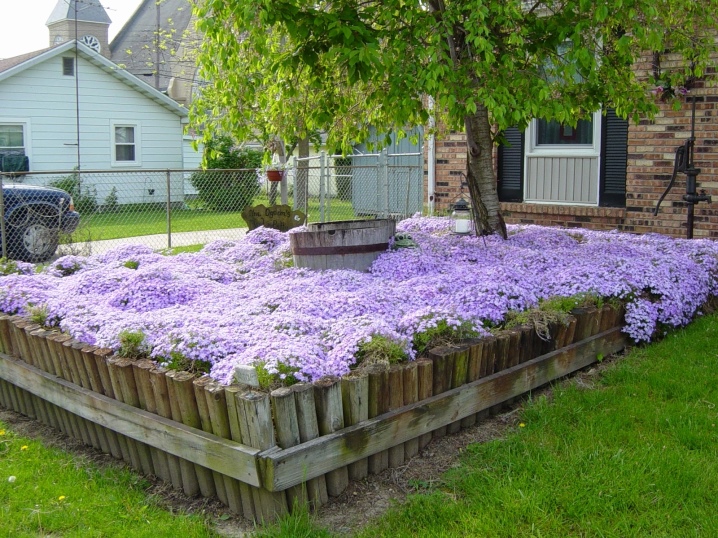
- combinations with conifers;

- framing paths, reservoirs.
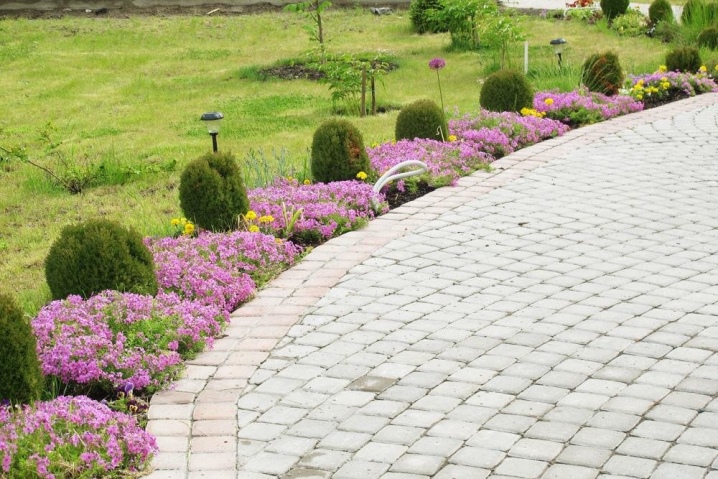
For information on how to properly care for perennial phlox, see the next video.







































































































The comment was sent successfully.